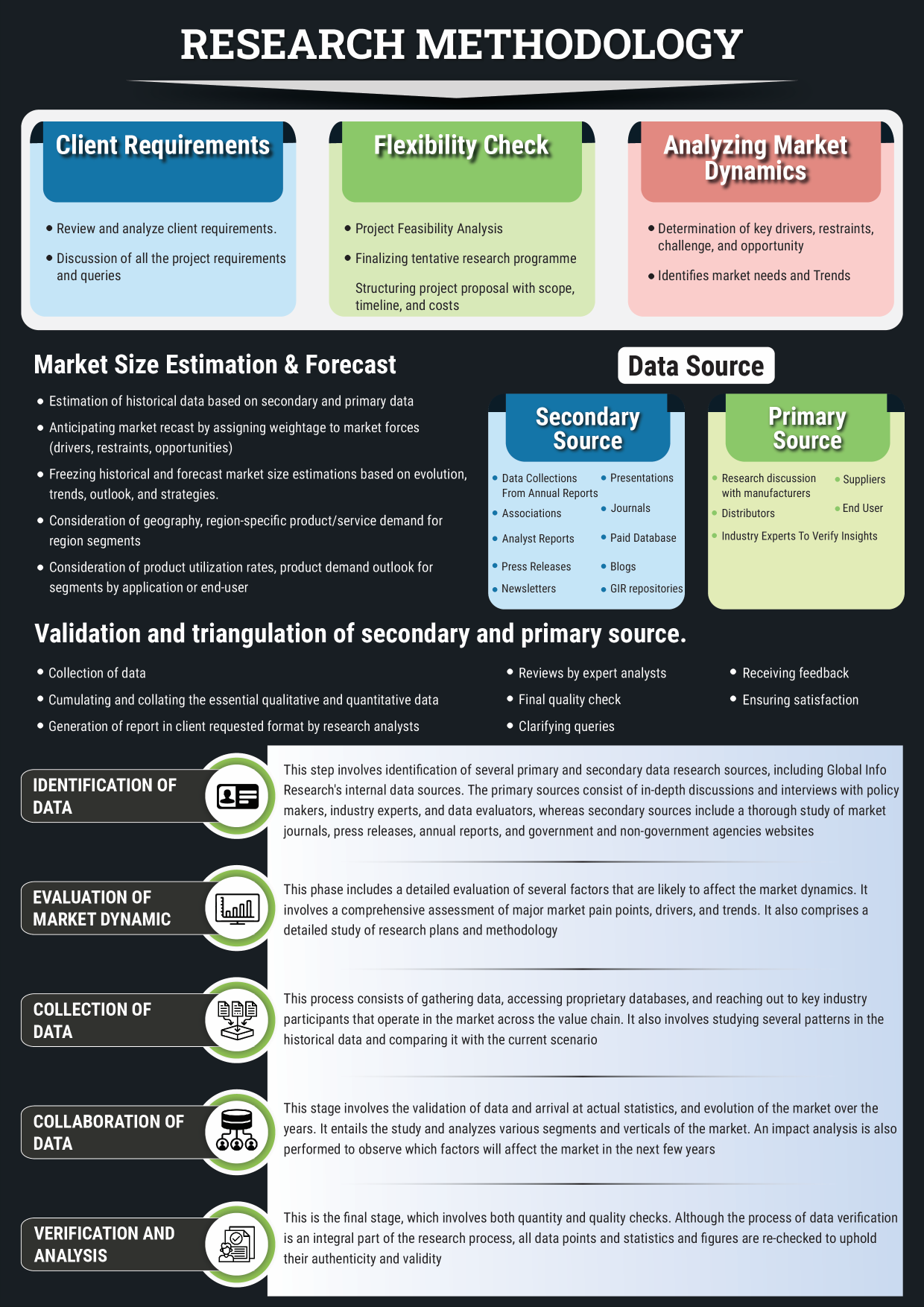Introduction
The Ovarian Cancer Microtubule Inhibitors Market is experiencing rapid growth, fueled by continuous innovations in treatment options and an increasing global incidence of ovarian cancer. Microtubule inhibitors, which target cancer cell division, are at the forefront of ovarian cancer therapy, especially in cases resistant to traditional treatments. As we approach 2025, this market is set to evolve, driven by breakthroughs in drug development, enhanced patient outcomes, and expanding access to novel therapies. This report delves into the key market drivers, innovations, regional dynamics, and strategic considerations influencing the global ovarian cancer microtubule inhibitors market.
Market Drivers
The global ovarian cancer microtubule inhibitors market is being shaped by several pivotal factors:
- Increasing Incidence of Ovarian Cancer
The global rise in ovarian cancer cases is a primary driver of market growth. The World Health Organization reports nearly 300,000 new ovarian cancer diagnoses annually. This surge is creating a significant demand for more effective and targeted treatments, such as microtubule inhibitors, particularly in advanced stages where conventional therapies may fail. - Advancements in Drug Development
The development of new microtubule inhibitors, including novel compounds like Mirvetuximab Soravtansine, is revolutionizing the treatment landscape. These therapies specifically target cancer cells while minimizing systemic side effects, offering a higher standard of care for patients with resistant ovarian cancer. This is expected to drive market growth significantly in the coming years. - Regulatory Approvals and Fast-Tracking
Regulatory bodies, particularly the FDA and EMA, have been accelerating the approval processes for new cancer therapies. This fast-tracking system has enabled breakthrough therapies like Mirvetuximab Soravtansine to reach the market faster, directly influencing the growth trajectory of the ovarian cancer microtubule inhibitors market. - Increased Awareness and Early Detection
Early detection of ovarian cancer, aided by advanced diagnostic technologies, is leading to better patient outcomes and, in turn, higher demand for targeted treatment options. Early-stage diagnosis is crucial for the efficacy of microtubule inhibitors, as it allows for better treatment planning and tailored therapy.
Innovations in Ovarian Cancer Microtubule Inhibitors
The ovarian cancer treatment landscape is witnessing groundbreaking innovations in microtubule inhibitors, particularly:
- Mirvetuximab Soravtansine
This first-in-class antibody-drug conjugate targets folate receptor-alpha (FRα) present on ovarian cancer cells, delivering a potent microtubule inhibitor directly to malignant cells. Mirvetuximab Soravtansine has shown promising results, especially in treating platinum-resistant ovarian cancer, and is poised to play a critical role in expanding treatment options. - Taccalonolides
Taccalonolides are a new class of microtubule-stabilizing agents derived from the Tacca plant. These agents are unique in their ability to counteract drug resistance, offering an alternative to conventional chemotherapy. They are still in early-stage development but show great promise for treating ovarian cancer more effectively. - Combination Therapies
The use of microtubule inhibitors in combination with other targeted therapies such as PARP inhibitors is gaining traction. This combined approach enhances the overall therapeutic effect, improving survival rates and offering more personalized treatment options to patients suffering from recurrent ovarian cancer.
Regional Market Dynamics
The ovarian cancer microtubule inhibitors market exhibits varied growth patterns across different regions:
- North America
North America, particularly the United States, remains the largest market for ovarian cancer therapies, including microtubule inhibitors. The presence of major pharmaceutical companies, advanced healthcare infrastructure, and high treatment adoption rates make this region a key growth driver. The market is expected to expand significantly, fueled by the continuous development of new therapies and widespread access to innovative treatments. - Europe
Europe is experiencing steady growth, with countries like the United Kingdom, Germany, and France leading the charge. An increasing number of ovarian cancer patients and high rates of clinical trial participation are contributing to the rising demand for microtubule inhibitors. European healthcare systems are also placing more emphasis on the adoption of targeted therapies, thus spurring market growth. - Asia-Pacific
The Asia-Pacific region is anticipated to witness the highest growth rate, driven by a large and growing patient population, expanding healthcare access, and increasing research activities. Countries such as China, India, and Japan are projected to emerge as key markets for ovarian cancer therapies, with a greater focus on clinical trials and regulatory improvements that are accelerating treatment availability. - Latin America and Middle East & Africa
These regions, while currently holding smaller market shares, are expected to see significant growth in the coming years. Improvements in healthcare infrastructure, increased cancer awareness, and better access to treatments are likely to drive market expansion.
Strategic Considerations for Stakeholders
To capitalize on the growth of the ovarian cancer microtubule inhibitors market, stakeholders must focus on the following strategic priorities:
- Investment in Research and Development
Continuous investment in R&D is crucial for developing next-generation therapies. This includes advancing microtubule inhibitors that can overcome existing resistance mechanisms and improve patient outcomes. Research should also focus on combination therapies to offer more effective treatment regimens. - Geographical Expansion
Expanding market presence in emerging regions like Asia-Pacific and Latin America will be essential for capturing market share. Partnerships with local healthcare providers, research institutions, and governments can facilitate market entry and overcome regional regulatory barriers. - Personalized Medicine
The growing trend toward personalized medicine will drive demand for microtubule inhibitors, especially as advancements in genomic testing allow for more targeted treatment plans. Companies should focus on integrating microtubule inhibitors into personalized cancer treatment regimens, improving treatment efficacy. - Collaborations and Partnerships
Forming strategic partnerships with research organizations, biopharmaceutical companies, and patient advocacy groups will enable companies to enhance their market offerings, accelerate innovation, and improve patient access to treatment.
Conclusion
The Ovarian Cancer Microtubule Inhibitors Market is set for significant growth through 2025 and beyond, driven by innovations in drug development, regulatory advancements, and increased global awareness of ovarian cancer. The market is becoming increasingly competitive, with new therapies, such as Mirvetuximab Soravtansine, leading the charge. As the treatment landscape evolves, companies will need to focus on research and development, geographical expansion, and personalized treatments to meet the growing demand for more effective therapies. By addressing these strategic considerations, stakeholders can position themselves for success in a rapidly evolving market.
Key Market Players
Bristol-Myers Squibb
Luye Pharma Group
Segmentation By Type
30 mg
50 mg
100 mg
150 mg
Segmentation By Application
Hospital
Clinic
Others
Segmentation By Region
North America (United States, Canada, and Mexico)
Europe (Germany, France, United Kingdom, Russia, Italy, and Rest of Europe)
Asia-Pacific (China, Japan, Korea, India, Southeast Asia, and Australia)
South America (Brazil, Argentina, Colombia, and Rest of South America)
Middle East & Africa (Saudi Arabia, UAE, Egypt, South Africa, and Rest of Middle East & Africa)
Chapter 1, to describe Ovarian Cancer Microtubule Inhibitors product scope, market overview, market estimation caveats and base year.
Chapter 2, to profile the top manufacturers of Ovarian Cancer Microtubule Inhibitors, with price, sales quantity, revenue, and global market share of Ovarian Cancer Microtubule Inhibitors from 2020 to 2025.
Chapter 3, the Ovarian Cancer Microtubule Inhibitors competitive situation, sales quantity, revenue, and global market share of top manufacturers are analyzed emphatically by landscape contrast.
Chapter 4, the Ovarian Cancer Microtubule Inhibitors breakdown data are shown at the regional level, to show the sales quantity, consumption value, and growth by regions, from 2020 to 2031.
Chapter 5 and 6, to segment the sales by Type and by Application, with sales market share and growth rate by Type, by Application, from 2020 to 2031.
Chapter 7, 8, 9, 10 and 11, to break the sales data at the country level, with sales quantity, consumption value, and market share for key countries in the world, from 2020 to 2025.and Ovarian Cancer Microtubule Inhibitors market forecast, by regions, by Type, and by Application, with sales and revenue, from 2026 to 2031.
Chapter 12, market dynamics, drivers, restraints, trends, and Porters Five Forces analysis.
Chapter 13, the key raw materials and key suppliers, and industry chain of Ovarian Cancer Microtubule Inhibitors.
Chapter 14 and 15, to describe Ovarian Cancer Microtubule Inhibitors sales channel, distributors, customers, research findings and conclusion.
1 Market Overview
1.1 Product Overview and Scope
1.2 Market Estimation Caveats and Base Year
1.3 Market Analysis by Type
1.3.1 Overview: Global Ovarian Cancer Microtubule Inhibitors Consumption Value by Type: 2020 Versus 2024 Versus 2031
1.3.2 30 mg
1.3.3 50 mg
1.3.4 100 mg
1.3.5 150 mg
1.4 Market Analysis by Application
1.4.1 Overview: Global Ovarian Cancer Microtubule Inhibitors Consumption Value by Application: 2020 Versus 2024 Versus 2031
1.4.2 Hospital
1.4.3 Clinic
1.4.4 Others
1.5 Global Ovarian Cancer Microtubule Inhibitors Market Size & Forecast
1.5.1 Global Ovarian Cancer Microtubule Inhibitors Consumption Value (2020 & 2024 & 2031)
1.5.2 Global Ovarian Cancer Microtubule Inhibitors Sales Quantity (2020-2031)
1.5.3 Global Ovarian Cancer Microtubule Inhibitors Average Price (2020-2031)
2 Manufacturers Profiles
2.1 Bristol-Myers Squibb
2.1.1 Bristol-Myers Squibb Details
2.1.2 Bristol-Myers Squibb Major Business
2.1.3 Bristol-Myers Squibb Ovarian Cancer Microtubule Inhibitors Product and Services
2.1.4 Bristol-Myers Squibb Ovarian Cancer Microtubule Inhibitors Sales Quantity, Average Price, Revenue, Gross Margin and Market Share (2020-2025)
2.1.5 Bristol-Myers Squibb Recent Developments/Updates
2.2 Luye Pharma Group
2.2.1 Luye Pharma Group Details
2.2.2 Luye Pharma Group Major Business
2.2.3 Luye Pharma Group Ovarian Cancer Microtubule Inhibitors Product and Services
2.2.4 Luye Pharma Group Ovarian Cancer Microtubule Inhibitors Sales Quantity, Average Price, Revenue, Gross Margin and Market Share (2020-2025)
2.2.5 Luye Pharma Group Recent Developments/Updates
3 Competitive Environment: Ovarian Cancer Microtubule Inhibitors by Manufacturer
3.1 Global Ovarian Cancer Microtubule Inhibitors Sales Quantity by Manufacturer (2020-2025)
3.2 Global Ovarian Cancer Microtubule Inhibitors Revenue by Manufacturer (2020-2025)
3.3 Global Ovarian Cancer Microtubule Inhibitors Average Price by Manufacturer (2020-2025)
3.4 Market Share Analysis (2024)
3.4.1 Producer Shipments of Ovarian Cancer Microtubule Inhibitors by Manufacturer Revenue ($MM) and Market Share (%): 2024
3.4.2 Top 3 Ovarian Cancer Microtubule Inhibitors Manufacturer Market Share in 2024
3.4.3 Top 6 Ovarian Cancer Microtubule Inhibitors Manufacturer Market Share in 2024
3.5 Ovarian Cancer Microtubule Inhibitors Market: Overall Company Footprint Analysis
3.5.1 Ovarian Cancer Microtubule Inhibitors Market: Region Footprint
3.5.2 Ovarian Cancer Microtubule Inhibitors Market: Company Product Type Footprint
3.5.3 Ovarian Cancer Microtubule Inhibitors Market: Company Product Application Footprint
3.6 New Market Entrants and Barriers to Market Entry
3.7 Mergers, Acquisition, Agreements, and Collaborations
4 Consumption Analysis by Region
4.1 Global Ovarian Cancer Microtubule Inhibitors Market Size by Region
4.1.1 Global Ovarian Cancer Microtubule Inhibitors Sales Quantity by Region (2020-2031)
4.1.2 Global Ovarian Cancer Microtubule Inhibitors Consumption Value by Region (2020-2031)
4.1.3 Global Ovarian Cancer Microtubule Inhibitors Average Price by Region (2020-2031)
4.2 North America Ovarian Cancer Microtubule Inhibitors Consumption Value (2020-2031)
4.3 Europe Ovarian Cancer Microtubule Inhibitors Consumption Value (2020-2031)
4.4 Asia-Pacific Ovarian Cancer Microtubule Inhibitors Consumption Value (2020-2031)
4.5 South America Ovarian Cancer Microtubule Inhibitors Consumption Value (2020-2031)
4.6 Middle East & Africa Ovarian Cancer Microtubule Inhibitors Consumption Value (2020-2031)
5 Market Segment by Type
5.1 Global Ovarian Cancer Microtubule Inhibitors Sales Quantity by Type (2020-2031)
5.2 Global Ovarian Cancer Microtubule Inhibitors Consumption Value by Type (2020-2031)
5.3 Global Ovarian Cancer Microtubule Inhibitors Average Price by Type (2020-2031)
6 Market Segment by Application
6.1 Global Ovarian Cancer Microtubule Inhibitors Sales Quantity by Application (2020-2031)
6.2 Global Ovarian Cancer Microtubule Inhibitors Consumption Value by Application (2020-2031)
6.3 Global Ovarian Cancer Microtubule Inhibitors Average Price by Application (2020-2031)
7 North America
7.1 North America Ovarian Cancer Microtubule Inhibitors Sales Quantity by Type (2020-2031)
7.2 North America Ovarian Cancer Microtubule Inhibitors Sales Quantity by Application (2020-2031)
7.3 North America Ovarian Cancer Microtubule Inhibitors Market Size by Country
7.3.1 North America Ovarian Cancer Microtubule Inhibitors Sales Quantity by Country (2020-2031)
7.3.2 North America Ovarian Cancer Microtubule Inhibitors Consumption Value by Country (2020-2031)
7.3.3 United States Market Size and Forecast (2020-2031)
7.3.4 Canada Market Size and Forecast (2020-2031)
7.3.5 Mexico Market Size and Forecast (2020-2031)
8 Europe
8.1 Europe Ovarian Cancer Microtubule Inhibitors Sales Quantity by Type (2020-2031)
8.2 Europe Ovarian Cancer Microtubule Inhibitors Sales Quantity by Application (2020-2031)
8.3 Europe Ovarian Cancer Microtubule Inhibitors Market Size by Country
8.3.1 Europe Ovarian Cancer Microtubule Inhibitors Sales Quantity by Country (2020-2031)
8.3.2 Europe Ovarian Cancer Microtubule Inhibitors Consumption Value by Country (2020-2031)
8.3.3 Germany Market Size and Forecast (2020-2031)
8.3.4 France Market Size and Forecast (2020-2031)
8.3.5 United Kingdom Market Size and Forecast (2020-2031)
8.3.6 Russia Market Size and Forecast (2020-2031)
8.3.7 Italy Market Size and Forecast (2020-2031)
9 Asia-Pacific
9.1 Asia-Pacific Ovarian Cancer Microtubule Inhibitors Sales Quantity by Type (2020-2031)
9.2 Asia-Pacific Ovarian Cancer Microtubule Inhibitors Sales Quantity by Application (2020-2031)
9.3 Asia-Pacific Ovarian Cancer Microtubule Inhibitors Market Size by Region
9.3.1 Asia-Pacific Ovarian Cancer Microtubule Inhibitors Sales Quantity by Region (2020-2031)
9.3.2 Asia-Pacific Ovarian Cancer Microtubule Inhibitors Consumption Value by Region (2020-2031)
9.3.3 China Market Size and Forecast (2020-2031)
9.3.4 Japan Market Size and Forecast (2020-2031)
9.3.5 South Korea Market Size and Forecast (2020-2031)
9.3.6 India Market Size and Forecast (2020-2031)
9.3.7 Southeast Asia Market Size and Forecast (2020-2031)
9.3.8 Australia Market Size and Forecast (2020-2031)
10 South America
10.1 South America Ovarian Cancer Microtubule Inhibitors Sales Quantity by Type (2020-2031)
10.2 South America Ovarian Cancer Microtubule Inhibitors Sales Quantity by Application (2020-2031)
10.3 South America Ovarian Cancer Microtubule Inhibitors Market Size by Country
10.3.1 South America Ovarian Cancer Microtubule Inhibitors Sales Quantity by Country (2020-2031)
10.3.2 South America Ovarian Cancer Microtubule Inhibitors Consumption Value by Country (2020-2031)
10.3.3 Brazil Market Size and Forecast (2020-2031)
10.3.4 Argentina Market Size and Forecast (2020-2031)
11 Middle East & Africa
11.1 Middle East & Africa Ovarian Cancer Microtubule Inhibitors Sales Quantity by Type (2020-2031)
11.2 Middle East & Africa Ovarian Cancer Microtubule Inhibitors Sales Quantity by Application (2020-2031)
11.3 Middle East & Africa Ovarian Cancer Microtubule Inhibitors Market Size by Country
11.3.1 Middle East & Africa Ovarian Cancer Microtubule Inhibitors Sales Quantity by Country (2020-2031)
11.3.2 Middle East & Africa Ovarian Cancer Microtubule Inhibitors Consumption Value by Country (2020-2031)
11.3.3 Turkey Market Size and Forecast (2020-2031)
11.3.4 Egypt Market Size and Forecast (2020-2031)
11.3.5 Saudi Arabia Market Size and Forecast (2020-2031)
11.3.6 South Africa Market Size and Forecast (2020-2031)
12 Market Dynamics
12.1 Ovarian Cancer Microtubule Inhibitors Market Drivers
12.2 Ovarian Cancer Microtubule Inhibitors Market Restraints
12.3 Ovarian Cancer Microtubule Inhibitors Trends Analysis
12.4 Porters Five Forces Analysis
12.4.1 Threat of New Entrants
12.4.2 Bargaining Power of Suppliers
12.4.3 Bargaining Power of Buyers
12.4.4 Threat of Substitutes
12.4.5 Competitive Rivalry
13 Raw Material and Industry Chain
13.1 Raw Material of Ovarian Cancer Microtubule Inhibitors and Key Manufacturers
13.2 Manufacturing Costs Percentage of Ovarian Cancer Microtubule Inhibitors
13.3 Ovarian Cancer Microtubule Inhibitors Production Process
13.4 Industry Value Chain Analysis
14 Shipments by Distribution Channel
14.1 Sales Channel
14.1.1 Direct to End-User
14.1.2 Distributors
14.2 Ovarian Cancer Microtubule Inhibitors Typical Distributors
14.3 Ovarian Cancer Microtubule Inhibitors Typical Customers
15 Research Findings and Conclusion
16 Appendix
16.1 Methodology
16.2 Research Process and Data Source
16.3 Disclaimer
List of Tables
Table 1. Global Ovarian Cancer Microtubule Inhibitors Consumption Value by Type, (USD Million), 2020 & 2024 & 2031
Table 2. Global Ovarian Cancer Microtubule Inhibitors Consumption Value by Application, (USD Million), 2020 & 2024 & 2031
Table 3. Bristol-Myers Squibb Basic Information, Manufacturing Base and Competitors
Table 4. Bristol-Myers Squibb Major Business
Table 5. Bristol-Myers Squibb Ovarian Cancer Microtubule Inhibitors Product and Services
Table 6. Bristol-Myers Squibb Ovarian Cancer Microtubule Inhibitors Sales Quantity (K Units), Average Price (US$/Unit), Revenue (USD Million), Gross Margin and Market Share (2020-2025)
Table 7. Bristol-Myers Squibb Recent Developments/Updates
Table 8. Luye Pharma Group Basic Information, Manufacturing Base and Competitors
Table 9. Luye Pharma Group Major Business
Table 10. Luye Pharma Group Ovarian Cancer Microtubule Inhibitors Product and Services
Table 11. Luye Pharma Group Ovarian Cancer Microtubule Inhibitors Sales Quantity (K Units), Average Price (US$/Unit), Revenue (USD Million), Gross Margin and Market Share (2020-2025)
Table 12. Luye Pharma Group Recent Developments/Updates
Table 13. Global Ovarian Cancer Microtubule Inhibitors Sales Quantity by Manufacturer (2020-2025) & (K Units)
Table 14. Global Ovarian Cancer Microtubule Inhibitors Revenue by Manufacturer (2020-2025) & (USD Million)
Table 15. Global Ovarian Cancer Microtubule Inhibitors Average Price by Manufacturer (2020-2025) & (US$/Unit)
Table 16. Market Position of Manufacturers in Ovarian Cancer Microtubule Inhibitors, (Tier 1, Tier 2, and Tier 3), Based on Revenue in 2024
Table 17. Head Office and Ovarian Cancer Microtubule Inhibitors Production Site of Key Manufacturer
Table 18. Ovarian Cancer Microtubule Inhibitors Market: Company Product Type Footprint
Table 19. Ovarian Cancer Microtubule Inhibitors Market: Company Product Application Footprint
Table 20. Ovarian Cancer Microtubule Inhibitors New Market Entrants and Barriers to Market Entry
Table 21. Ovarian Cancer Microtubule Inhibitors Mergers, Acquisition, Agreements, and Collaborations
Table 22. Global Ovarian Cancer Microtubule Inhibitors Consumption Value by Region (2020-2024-2031) & (USD Million) & CAGR
Table 23. Global Ovarian Cancer Microtubule Inhibitors Sales Quantity by Region (2020-2025) & (K Units)
Table 24. Global Ovarian Cancer Microtubule Inhibitors Sales Quantity by Region (2026-2031) & (K Units)
Table 25. Global Ovarian Cancer Microtubule Inhibitors Consumption Value by Region (2020-2025) & (USD Million)
Table 26. Global Ovarian Cancer Microtubule Inhibitors Consumption Value by Region (2026-2031) & (USD Million)
Table 27. Global Ovarian Cancer Microtubule Inhibitors Average Price by Region (2020-2025) & (US$/Unit)
Table 28. Global Ovarian Cancer Microtubule Inhibitors Average Price by Region (2026-2031) & (US$/Unit)
Table 29. Global Ovarian Cancer Microtubule Inhibitors Sales Quantity by Type (2020-2025) & (K Units)
Table 30. Global Ovarian Cancer Microtubule Inhibitors Sales Quantity by Type (2026-2031) & (K Units)
Table 31. Global Ovarian Cancer Microtubule Inhibitors Consumption Value by Type (2020-2025) & (USD Million)
Table 32. Global Ovarian Cancer Microtubule Inhibitors Consumption Value by Type (2026-2031) & (USD Million)
Table 33. Global Ovarian Cancer Microtubule Inhibitors Average Price by Type (2020-2025) & (US$/Unit)
Table 34. Global Ovarian Cancer Microtubule Inhibitors Average Price by Type (2026-2031) & (US$/Unit)
Table 35. Global Ovarian Cancer Microtubule Inhibitors Sales Quantity by Application (2020-2025) & (K Units)
Table 36. Global Ovarian Cancer Microtubule Inhibitors Sales Quantity by Application (2026-2031) & (K Units)
Table 37. Global Ovarian Cancer Microtubule Inhibitors Consumption Value by Application (2020-2025) & (USD Million)
Table 38. Global Ovarian Cancer Microtubule Inhibitors Consumption Value by Application (2026-2031) & (USD Million)
Table 39. Global Ovarian Cancer Microtubule Inhibitors Average Price by Application (2020-2025) & (US$/Unit)
Table 40. Global Ovarian Cancer Microtubule Inhibitors Average Price by Application (2026-2031) & (US$/Unit)
Table 41. North America Ovarian Cancer Microtubule Inhibitors Sales Quantity by Type (2020-2025) & (K Units)
Table 42. North America Ovarian Cancer Microtubule Inhibitors Sales Quantity by Type (2026-2031) & (K Units)
Table 43. North America Ovarian Cancer Microtubule Inhibitors Sales Quantity by Application (2020-2025) & (K Units)
Table 44. North America Ovarian Cancer Microtubule Inhibitors Sales Quantity by Application (2026-2031) & (K Units)
Table 45. North America Ovarian Cancer Microtubule Inhibitors Sales Quantity by Country (2020-2025) & (K Units)
Table 46. North America Ovarian Cancer Microtubule Inhibitors Sales Quantity by Country (2026-2031) & (K Units)
Table 47. North America Ovarian Cancer Microtubule Inhibitors Consumption Value by Country (2020-2025) & (USD Million)
Table 48. North America Ovarian Cancer Microtubule Inhibitors Consumption Value by Country (2026-2031) & (USD Million)
Table 49. Europe Ovarian Cancer Microtubule Inhibitors Sales Quantity by Type (2020-2025) & (K Units)
Table 50. Europe Ovarian Cancer Microtubule Inhibitors Sales Quantity by Type (2026-2031) & (K Units)
Table 51. Europe Ovarian Cancer Microtubule Inhibitors Sales Quantity by Application (2020-2025) & (K Units)
Table 52. Europe Ovarian Cancer Microtubule Inhibitors Sales Quantity by Application (2026-2031) & (K Units)
Table 53. Europe Ovarian Cancer Microtubule Inhibitors Sales Quantity by Country (2020-2025) & (K Units)
Table 54. Europe Ovarian Cancer Microtubule Inhibitors Sales Quantity by Country (2026-2031) & (K Units)
Table 55. Europe Ovarian Cancer Microtubule Inhibitors Consumption Value by Country (2020-2025) & (USD Million)
Table 56. Europe Ovarian Cancer Microtubule Inhibitors Consumption Value by Country (2026-2031) & (USD Million)
Table 57. Asia-Pacific Ovarian Cancer Microtubule Inhibitors Sales Quantity by Type (2020-2025) & (K Units)
Table 58. Asia-Pacific Ovarian Cancer Microtubule Inhibitors Sales Quantity by Type (2026-2031) & (K Units)
Table 59. Asia-Pacific Ovarian Cancer Microtubule Inhibitors Sales Quantity by Application (2020-2025) & (K Units)
Table 60. Asia-Pacific Ovarian Cancer Microtubule Inhibitors Sales Quantity by Application (2026-2031) & (K Units)
Table 61. Asia-Pacific Ovarian Cancer Microtubule Inhibitors Sales Quantity by Region (2020-2025) & (K Units)
Table 62. Asia-Pacific Ovarian Cancer Microtubule Inhibitors Sales Quantity by Region (2026-2031) & (K Units)
Table 63. Asia-Pacific Ovarian Cancer Microtubule Inhibitors Consumption Value by Region (2020-2025) & (USD Million)
Table 64. Asia-Pacific Ovarian Cancer Microtubule Inhibitors Consumption Value by Region (2026-2031) & (USD Million)
Table 65. South America Ovarian Cancer Microtubule Inhibitors Sales Quantity by Type (2020-2025) & (K Units)
Table 66. South America Ovarian Cancer Microtubule Inhibitors Sales Quantity by Type (2026-2031) & (K Units)
Table 67. South America Ovarian Cancer Microtubule Inhibitors Sales Quantity by Application (2020-2025) & (K Units)
Table 68. South America Ovarian Cancer Microtubule Inhibitors Sales Quantity by Application (2026-2031) & (K Units)
Table 69. South America Ovarian Cancer Microtubule Inhibitors Sales Quantity by Country (2020-2025) & (K Units)
Table 70. South America Ovarian Cancer Microtubule Inhibitors Sales Quantity by Country (2026-2031) & (K Units)
Table 71. South America Ovarian Cancer Microtubule Inhibitors Consumption Value by Country (2020-2025) & (USD Million)
Table 72. South America Ovarian Cancer Microtubule Inhibitors Consumption Value by Country (2026-2031) & (USD Million)
Table 73. Middle East & Africa Ovarian Cancer Microtubule Inhibitors Sales Quantity by Type (2020-2025) & (K Units)
Table 74. Middle East & Africa Ovarian Cancer Microtubule Inhibitors Sales Quantity by Type (2026-2031) & (K Units)
Table 75. Middle East & Africa Ovarian Cancer Microtubule Inhibitors Sales Quantity by Application (2020-2025) & (K Units)
Table 76. Middle East & Africa Ovarian Cancer Microtubule Inhibitors Sales Quantity by Application (2026-2031) & (K Units)
Table 77. Middle East & Africa Ovarian Cancer Microtubule Inhibitors Sales Quantity by Country (2020-2025) & (K Units)
Table 78. Middle East & Africa Ovarian Cancer Microtubule Inhibitors Sales Quantity by Country (2026-2031) & (K Units)
Table 79. Middle East & Africa Ovarian Cancer Microtubule Inhibitors Consumption Value by Country (2020-2025) & (USD Million)
Table 80. Middle East & Africa Ovarian Cancer Microtubule Inhibitors Consumption Value by Country (2026-2031) & (USD Million)
Table 81. Ovarian Cancer Microtubule Inhibitors Raw Material
Table 82. Key Manufacturers of Ovarian Cancer Microtubule Inhibitors Raw Materials
Table 83. Ovarian Cancer Microtubule Inhibitors Typical Distributors
Table 84. Ovarian Cancer Microtubule Inhibitors Typical Customers
List of Figures
Figure 1. Ovarian Cancer Microtubule Inhibitors Picture
Figure 2. Global Ovarian Cancer Microtubule Inhibitors Revenue by Type, (USD Million), 2020 & 2024 & 2031
Figure 3. Global Ovarian Cancer Microtubule Inhibitors Revenue Market Share by Type in 2024
Figure 4. 30 mg Examples
Figure 5. 50 mg Examples
Figure 6. 100 mg Examples
Figure 7. 150 mg Examples
Figure 8. Global Ovarian Cancer Microtubule Inhibitors Consumption Value by Application, (USD Million), 2020 & 2024 & 2031
Figure 9. Global Ovarian Cancer Microtubule Inhibitors Revenue Market Share by Application in 2024
Figure 10. Hospital Examples
Figure 11. Clinic Examples
Figure 12. Others Examples
Figure 13. Global Ovarian Cancer Microtubule Inhibitors Consumption Value, (USD Million): 2020 & 2024 & 2031
Figure 14. Global Ovarian Cancer Microtubule Inhibitors Consumption Value and Forecast (2020-2031) & (USD Million)
Figure 15. Global Ovarian Cancer Microtubule Inhibitors Sales Quantity (2020-2031) & (K Units)
Figure 16. Global Ovarian Cancer Microtubule Inhibitors Price (2020-2031) & (US$/Unit)
Figure 17. Global Ovarian Cancer Microtubule Inhibitors Sales Quantity Market Share by Manufacturer in 2024
Figure 18. Global Ovarian Cancer Microtubule Inhibitors Revenue Market Share by Manufacturer in 2024
Figure 19. Producer Shipments of Ovarian Cancer Microtubule Inhibitors by Manufacturer Sales ($MM) and Market Share (%): 2024
Figure 20. Top 3 Ovarian Cancer Microtubule Inhibitors Manufacturer (Revenue) Market Share in 2024
Figure 21. Top 6 Ovarian Cancer Microtubule Inhibitors Manufacturer (Revenue) Market Share in 2024
Figure 22. Global Ovarian Cancer Microtubule Inhibitors Sales Quantity Market Share by Region (2020-2031)
Figure 23. Global Ovarian Cancer Microtubule Inhibitors Consumption Value Market Share by Region (2020-2031)
Figure 24. North America Ovarian Cancer Microtubule Inhibitors Consumption Value (2020-2031) & (USD Million)
Figure 25. Europe Ovarian Cancer Microtubule Inhibitors Consumption Value (2020-2031) & (USD Million)
Figure 26. Asia-Pacific Ovarian Cancer Microtubule Inhibitors Consumption Value (2020-2031) & (USD Million)
Figure 27. South America Ovarian Cancer Microtubule Inhibitors Consumption Value (2020-2031) & (USD Million)
Figure 28. Middle East & Africa Ovarian Cancer Microtubule Inhibitors Consumption Value (2020-2031) & (USD Million)
Figure 29. Global Ovarian Cancer Microtubule Inhibitors Sales Quantity Market Share by Type (2020-2031)
Figure 30. Global Ovarian Cancer Microtubule Inhibitors Consumption Value Market Share by Type (2020-2031)
Figure 31. Global Ovarian Cancer Microtubule Inhibitors Average Price by Type (2020-2031) & (US$/Unit)
Figure 32. Global Ovarian Cancer Microtubule Inhibitors Sales Quantity Market Share by Application (2020-2031)
Figure 33. Global Ovarian Cancer Microtubule Inhibitors Revenue Market Share by Application (2020-2031)
Figure 34. Global Ovarian Cancer Microtubule Inhibitors Average Price by Application (2020-2031) & (US$/Unit)
Figure 35. North America Ovarian Cancer Microtubule Inhibitors Sales Quantity Market Share by Type (2020-2031)
Figure 36. North America Ovarian Cancer Microtubule Inhibitors Sales Quantity Market Share by Application (2020-2031)
Figure 37. North America Ovarian Cancer Microtubule Inhibitors Sales Quantity Market Share by Country (2020-2031)
Figure 38. North America Ovarian Cancer Microtubule Inhibitors Consumption Value Market Share by Country (2020-2031)
Figure 39. United States Ovarian Cancer Microtubule Inhibitors Consumption Value (2020-2031) & (USD Million)
Figure 40. Canada Ovarian Cancer Microtubule Inhibitors Consumption Value (2020-2031) & (USD Million)
Figure 41. Mexico Ovarian Cancer Microtubule Inhibitors Consumption Value (2020-2031) & (USD Million)
Figure 42. Europe Ovarian Cancer Microtubule Inhibitors Sales Quantity Market Share by Type (2020-2031)
Figure 43. Europe Ovarian Cancer Microtubule Inhibitors Sales Quantity Market Share by Application (2020-2031)
Figure 44. Europe Ovarian Cancer Microtubule Inhibitors Sales Quantity Market Share by Country (2020-2031)
Figure 45. Europe Ovarian Cancer Microtubule Inhibitors Consumption Value Market Share by Country (2020-2031)
Figure 46. Germany Ovarian Cancer Microtubule Inhibitors Consumption Value (2020-2031) & (USD Million)
Figure 47. France Ovarian Cancer Microtubule Inhibitors Consumption Value (2020-2031) & (USD Million)
Figure 48. United Kingdom Ovarian Cancer Microtubule Inhibitors Consumption Value (2020-2031) & (USD Million)
Figure 49. Russia Ovarian Cancer Microtubule Inhibitors Consumption Value (2020-2031) & (USD Million)
Figure 50. Italy Ovarian Cancer Microtubule Inhibitors Consumption Value (2020-2031) & (USD Million)
Figure 51. Asia-Pacific Ovarian Cancer Microtubule Inhibitors Sales Quantity Market Share by Type (2020-2031)
Figure 52. Asia-Pacific Ovarian Cancer Microtubule Inhibitors Sales Quantity Market Share by Application (2020-2031)
Figure 53. Asia-Pacific Ovarian Cancer Microtubule Inhibitors Sales Quantity Market Share by Region (2020-2031)
Figure 54. Asia-Pacific Ovarian Cancer Microtubule Inhibitors Consumption Value Market Share by Region (2020-2031)
Figure 55. China Ovarian Cancer Microtubule Inhibitors Consumption Value (2020-2031) & (USD Million)
Figure 56. Japan Ovarian Cancer Microtubule Inhibitors Consumption Value (2020-2031) & (USD Million)
Figure 57. South Korea Ovarian Cancer Microtubule Inhibitors Consumption Value (2020-2031) & (USD Million)
Figure 58. India Ovarian Cancer Microtubule Inhibitors Consumption Value (2020-2031) & (USD Million)
Figure 59. Southeast Asia Ovarian Cancer Microtubule Inhibitors Consumption Value (2020-2031) & (USD Million)
Figure 60. Australia Ovarian Cancer Microtubule Inhibitors Consumption Value (2020-2031) & (USD Million)
Figure 61. South America Ovarian Cancer Microtubule Inhibitors Sales Quantity Market Share by Type (2020-2031)
Figure 62. South America Ovarian Cancer Microtubule Inhibitors Sales Quantity Market Share by Application (2020-2031)
Figure 63. South America Ovarian Cancer Microtubule Inhibitors Sales Quantity Market Share by Country (2020-2031)
Figure 64. South America Ovarian Cancer Microtubule Inhibitors Consumption Value Market Share by Country (2020-2031)
Figure 65. Brazil Ovarian Cancer Microtubule Inhibitors Consumption Value (2020-2031) & (USD Million)
Figure 66. Argentina Ovarian Cancer Microtubule Inhibitors Consumption Value (2020-2031) & (USD Million)
Figure 67. Middle East & Africa Ovarian Cancer Microtubule Inhibitors Sales Quantity Market Share by Type (2020-2031)
Figure 68. Middle East & Africa Ovarian Cancer Microtubule Inhibitors Sales Quantity Market Share by Application (2020-2031)
Figure 69. Middle East & Africa Ovarian Cancer Microtubule Inhibitors Sales Quantity Market Share by Country (2020-2031)
Figure 70. Middle East & Africa Ovarian Cancer Microtubule Inhibitors Consumption Value Market Share by Country (2020-2031)
Figure 71. Turkey Ovarian Cancer Microtubule Inhibitors Consumption Value (2020-2031) & (USD Million)
Figure 72. Egypt Ovarian Cancer Microtubule Inhibitors Consumption Value (2020-2031) & (USD Million)
Figure 73. Saudi Arabia Ovarian Cancer Microtubule Inhibitors Consumption Value (2020-2031) & (USD Million)
Figure 74. South Africa Ovarian Cancer Microtubule Inhibitors Consumption Value (2020-2031) & (USD Million)
Figure 75. Ovarian Cancer Microtubule Inhibitors Market Drivers
Figure 76. Ovarian Cancer Microtubule Inhibitors Market Restraints
Figure 77. Ovarian Cancer Microtubule Inhibitors Market Trends
Figure 78. Porters Five Forces Analysis
Figure 79. Manufacturing Cost Structure Analysis of Ovarian Cancer Microtubule Inhibitors in 2024
Figure 80. Manufacturing Process Analysis of Ovarian Cancer Microtubule Inhibitors
Figure 81. Ovarian Cancer Microtubule Inhibitors Industrial Chain
Figure 82. Sales Channel: Direct to End-User vs Distributors
Figure 83. Direct Channel Pros & Cons
Figure 84. Indirect Channel Pros & Cons
Figure 85. Methodology
Figure 86. Research Process and Data Source











